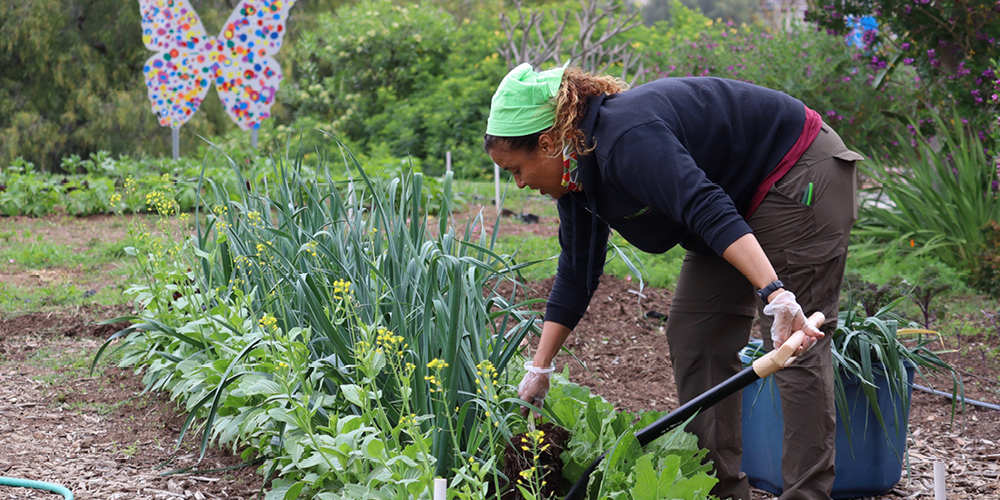In 2021, Americans gave $484.85 billion to charity. According to the Giving USA 2022 annual report, giving increased by 4 percent over 2020.
State of Local Nonprofits
While philanthropy continues to grow and several sub-sectors that struggled in 2020 experienced recoveries in 2021, the past few years have been very difficult locally. Nonprofits in San Diego face increasing demands to deliver services while struggling to recruit and retain qualified staff, recover from the economic hardships caused by the COVID-19 pandemic, and gain support from the community.
The University of San Diego’s Nonprofit Institute State of Nonprofits & Philanthropy report states that San Diegans are growing increasingly alarmed about issues like access to housing, the effects of climate change, and mental health issues. Despite this heightened apprehension over many of the issues that nonprofits are called upon to address, San Diegans ranked the economic condition of nonprofits as their lowest issue of concern.
Perhaps the most concerning trend in the sector this year is the rising costs of living in San Diego coupled with historic levels of inflation. Not only does inflation drive up the costs nonprofits incur when delivering their services, but it has also put upward pressure on wages, eroded the value of nonprofit assets, and negatively influenced individual giving.
Simultaneously, issues like inflation, national and international political forces, and COVID fallout have led to an increased demand for services. However, the sector struggles with inequities in revenue growth and competition with for-profit organizations in the workforce. Fifty percent of nonprofit leaders reported having a waitlist for services and just 15 percent of respondents reported they have been able to meet all of the increased demand.
Although organizations with budgets less than $5 million comprise 91 percent of San Diego’s nonprofit sector, over the past five years total revenue among these organizations has shrunk or remained the same while revenue among the largest organizations has grown.
The increased demands for nonprofit services in San Diego indicate this sector can and should grow. However, nonprofits reported difficulty attracting talent due to an inability to offer competitive wages and benefits that keep pace with inflation and a lack of affordable housing for employees in San Diego County.
Prior to the pandemic, nonprofits typically reported having less than three months of cash reserves. Now, 88 percent of the organizations that were surveyed reported having more than three months of reserves, with an average of eight months of reserves on hand. While this has led to an increase in financial strength within the sector, there is a downward trend in individual giving.
Additionally, COVID-19 emergency relief funding is dwindling. As of this year, half of the nonprofits that received emergency relief funding had spent it all. A portion of the sector is still operating with emergency relief funding, and a majority of those are not fully confident they will be able to make up budget shortfalls when the funding runs out.
Positive Changes
However, there have been some positive changes in philanthropy over the past year. Due to the pandemic, funders who make grants to nonprofits adjusted many of their traditional practices, making it easier to quickly deploy funding to meet growing and shifting needs in the community. When asked which grantmaking practices funders have been enacting or maintaining, the most observed were prioritizing support for Black, indigenous and people of color (BIPOC)-serving organizations, providing unrestricted funding, and communicating proactively about decision-making.
There are also strides being made in the diversity, equity and inclusion (DEI) space. Seventy-seven percent of respondents said they are satisfied with their organization’s willingness to discuss concepts of DEI, and 56 percent said they’re satisfied with their organization’s ability to implement practices to increase DEI.
While 56 percent of San Diego County’s population identifies as BIPOC, a far smaller percentage of CEOs, board chairs, leadership teams and board members identify as BIPOC. However, we’re seeing small increases in BIPOC representation among nonprofit leadership between 2021 and 2022. Now, the challenge is to continue closing the gap and moving toward a racial makeup of nonprofit leadership more representative of the San Diego region.
Expert Recommendations
For nonprofits to meet the increased demand for services in San Diego, nonprofit leaders and staff need support to develop their organizations. To ensure the success of these local nonprofits, the community must get more involved. Nonprofit leaders and boards need to ensure sound financial planning to manage the effects of inflation and advocate with foundation and government funders to invest in the nonprofit workforce. Donors, foundations, and funders need to tell the story of the nonprofit sector and invest in the development of the nonprofit workforce. Lastly, the San Diego community needs to advocate and engage directly with the nonprofits that protect their quality of life in the region.
Nonprofits in San Diego need their community’s help now more than ever. Learn more about giving in San Diego by reviewing our 2022 Annual Report.
Giving to local nonprofits is easy for current foldholders; learn more about how you can give with SDF and support community-based organizations and causes in San Diego and beyond.




